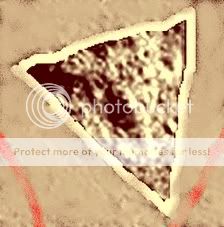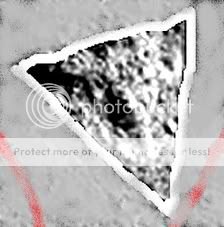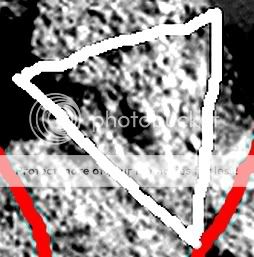It looks like you're using an Ad Blocker.
Please white-list or disable AboveTopSecret.com in your ad-blocking tool.
Thank you.
Some features of ATS will be disabled while you continue to use an ad-blocker.
share:
Rik ,I read you loud and clear.It's very possible these microtechs exist side by side with the biological life forms,or some mixing of the 2 goes on.
You've seen before what I'm coming to realize. That's somewhat comforting to me. It helps to know what to expect up ahead. I have used a crutch of
negative images to get beyond the nasa masking.Here it's less needed. The digging is uncovering life forms that even a child could see.
fawkes4.lpl.arizona.edu... 






 Sandbag and talk about ICE. Waste time ,money,resources
,media attention and divert the public away from evidence of current and previous life on Mars. Do your JOB or you face imprisonment,fines,loss of
your career. Loose LIPS. Weak links.
Sandbag and talk about ICE. Waste time ,money,resources
,media attention and divert the public away from evidence of current and previous life on Mars. Do your JOB or you face imprisonment,fines,loss of
your career. Loose LIPS. Weak links.








I know this is off-topic, but I would like to answer it anyway.
Originally posted by rikriley
This is where I believe our tiny micro printed circuit boards on Earth were born from information obtained not only from crashed UFOs but from Martian technologies.
Printed circuit boards (PCBs) are the natural evolution of the previously used method, using just wires to connect the components, and the wire wrap technique can be seen as a in-between method.
In the same way, the hybrid integrated circuit can be seen as the evolution of the PCB (they are just smaller PCBs encapsulated in some form of package) and a integrated circuit is the same but is made in just one piece (the components are created in the silicon plate, not put there after).
As I have used all of these techniques myself (except integrated circuits, I have never built or designed one of those), I thought I should try to clear this mistake.
reply to post by ArMaP
Good clarification. I love when people don't understand technology and then make the leap to the assumption that it was retro-engineered from UFOs.
Love it. Fun. Good times. You know the sufficiently advanced technology= magic routine.
Fibre optics... ALIEN.
DNA? Aliens.
plasma? Aliens.
tesla? Alien.
Dave Thomas founder of Wendy's? Not alien. But WAS a member of secret subteranean culture.
Good clarification. I love when people don't understand technology and then make the leap to the assumption that it was retro-engineered from UFOs.
Love it. Fun. Good times. You know the sufficiently advanced technology= magic routine.
Fibre optics... ALIEN.
DNA? Aliens.
plasma? Aliens.
tesla? Alien.
Dave Thomas founder of Wendy's? Not alien. But WAS a member of secret subteranean culture.
reply to post by rikriley
Yes. It's called Life. Little self-replicating electrochemical machines. That's Us!! You discovered Life. Amazing concept.
I also agree that Mars is crawling with stuff. Probably on scales that defy our notions of life scale.
Scalar. hmmm... low gravity. Aqueous past. Probably briny shallow seas. Water near poles, now....
Yes. It's called Life. Little self-replicating electrochemical machines. That's Us!! You discovered Life. Amazing concept.
I also agree that Mars is crawling with stuff. Probably on scales that defy our notions of life scale.
Scalar. hmmm... low gravity. Aqueous past. Probably briny shallow seas. Water near poles, now....
The first results from the "wet test" were received.
Results from the TEGA (Thermal and Evolved-Gas Analyzer) will take some more weeks.
Well, let's wait some more.
"We are awash in chemistry data," said Michael Hecht of NASA's Jet Propulsion Laboratory, lead scientist for the Microscopy, Electrochemistry and Conductivity Analyzer, or MECA, instrument on Phoenix. "We're trying to understand what is the chemistry of wet soil on Mars, what's dissolved in it, how acidic or alkaline it is. With the results we received from Phoenix yesterday, we could begin to tell what aspects of the soil might support life."
"This soil appears to be a close analog to surface soils found in the upper dry valleys in Antarctica," Kouvanes said. "The alkalinity of the soil at this location is definitely striking. At this specific location, one-inch into the surface layer, the soil is very basic, with a pH of between eight and nine. We also found a variety of components of salts that we haven't had time to analyze and identify yet, but that include magnesium, sodium, potassium and chloride."
Results from the TEGA (Thermal and Evolved-Gas Analyzer) will take some more weeks.
Well, let's wait some more.
I really feel that people need to look at the pictures of Mars more!
I apologize, but this is a crude virtual tour of a small piece of Martian real estate. You might like it.
www.abovetopsecret.com...'
I apologize, but this is a crude virtual tour of a small piece of Martian real estate. You might like it.
www.abovetopsecret.com...'
One of the scientists on the Phoenix mission, Dr. Tom Pike from Imperial College London, is writing a diary for the BBC News website. His last entry
was from August 6, this is a few lines from it:
If you are interested in reading and following Dr. Pike's diary, go to this link:
news.bbc.co.uk...
It was more than a month ago, on sol 30, that the wet chemistry laboratory (WCL) on Phoenix first detected what looked like perchlorate in the Martian soil.
We've waited until sol 72 to report this finding, and even this has been a somewhat reluctant announcement. To many people, the question will be what did we have to hide?
The answer highlights a fundamental difficulty of doing good science under the gaze of the public.
When the science relates to the possibility of life on another planet, that gaze can become very intense. The data from WCL that streamed back to Earth was not immediately ready for such public scrutiny.
If you are interested in reading and following Dr. Pike's diary, go to this link:
news.bbc.co.uk...
Frozen death looms for Mars lander

A thin layer of water frost is visible on the ground around NASA's Phoenix Mars Lander in this image taken by the Surface Stereo Imager at 6 a.m. on August 14, 2008.
Link to full article:
www.msnbc.msn.com...
Further reading at Phoenix Mars Mission home page:
phoenix.lpl.arizona.edu...
After more than four months on the arctic plains of the red planet, NASA's Phoenix Mars Lander's days are finally numbered. As the sun begins to set for the frigid Martian winter, the spacecraft will lose its energy supply, freeze and eventually fall into a mechanical coma from which it will likely never wake up.
...
As winter descends on the Martian arctic, two important things will happen: The sun will sink below the horizon, and "it's going to get cold," said Phoenix meteorological team member Peter Taylor of York University in Toronto, Canada.
Of course, Mars is never warm by Earth standards (it is further from the sun and lacks our planet's thick, heat-trapping atmosphere), but summer above the Martian arctic circle is downright balmy compared to the winter.
Midday temperatures at Phoenix's landing site hit about -4 degrees Fahrenheit (-20 degrees Celsius) in the summer (as measured by the lander's meteorological mast thermometer). Nighttime temperatures then still dropped to -112 F (-80 C). Currently, those daytime temperatures have started dipping down to -22 F (-30 C), with nighttime temperatures hitting about -130 F (-90 C).
By mid-November, those night temperatures are expected to plummet to -184 F (-120 C).
The reason of course, is that setting sun.
The sun is constantly above the horizon during the arctic summer, just as it is on Earth. Come fall, it starts to dip below the horizon more and more each day until winter, when it sets for good and doesn't rise again until the spring.
...
The colder temperatures and setting sun combined will diminish the energy available to Phoenix for its science operations.
During the summer, there is plenty of sunlight hitting Phoenix's wing-like solar arrays, its sole source of power on the planet. But once the sun is gone, so is its energy supply.
"The sun is going down, so there's less and less energy being fed into the batteries through the solar panels, and that really is the biggest problem" facing the mission, Taylor said.
Specifically, the orientation of Phoenix's solar arrays limits how much sunlight it can take in as the sun changes its position in the sky.
"The problem is that the solar panels are horizontal, and we can't tilt them, so as the sun gets lower and lower on the horizon, there's less and less power being generated," Taylor explained.

A thin layer of water frost is visible on the ground around NASA's Phoenix Mars Lander in this image taken by the Surface Stereo Imager at 6 a.m. on August 14, 2008.
Link to full article:
www.msnbc.msn.com...
Further reading at Phoenix Mars Mission home page:
phoenix.lpl.arizona.edu...
new topics
-
Bizarre Labour Party Tic Toc Video Becomes Even More Embarrassing
Regional Politics: 2 hours ago -
Potter to WHU
World Sports: 7 hours ago -
Dr. Demento
Music: 9 hours ago -
The elephant in the room (wearing a hoodie)
US Political Madness: 9 hours ago
top topics
-
The elephant in the room (wearing a hoodie)
US Political Madness: 9 hours ago, 14 flags -
To become president, Zelensky had to learn Ukrainian
Political Conspiracies: 16 hours ago, 9 flags -
Dr. Demento
Music: 9 hours ago, 6 flags -
Bizarre Labour Party Tic Toc Video Becomes Even More Embarrassing
Regional Politics: 2 hours ago, 3 flags -
Potter to WHU
World Sports: 7 hours ago, 2 flags
active topics
-
House Passes Laken Riley Act
Mainstream News • 23 • : WeMustCare -
Los Angeles brush fires latest: 2 blazes threaten structures, prompt evacuations
Mainstream News • 233 • : BeyondKnowledge3 -
-@TH3WH17ERABB17- -Q- ---TIME TO SHOW THE WORLD--- -Part- --44--
Dissecting Disinformation • 3977 • : IndieA -
What Comes After January 20th
Mainstream News • 38 • : JadedGhost -
Post A Funny (T&C Friendly) Pic Part IV: The LOL awakens!
General Chit Chat • 8008 • : KrustyKrab -
Bizarre Labour Party Tic Toc Video Becomes Even More Embarrassing
Regional Politics • 7 • : Athetos -
To become president, Zelensky had to learn Ukrainian
Political Conspiracies • 31 • : FlyersFan -
S.C. Jack Smith's Final Report Says Trump Leads a Major Conspiratorial Criminal Organization!.
Political Conspiracies • 45 • : WeMustCare -
President Carter has passed
Mainstream News • 54 • : WeMustCare -
The Truth about Migrant Crime in Britain.
Social Issues and Civil Unrest • 43 • : angelchemuel
